 LUCY BURDETTE: We've probably talked about this before (what haven't we talked about??)--but it's on my mind as I scramble to the finish line for Topped Chef. I like to use real places in my books. In the case of the food critic mysteries, this means real Key West restaurants and even some real characters. I can wallow in chocolate crepes at La Creperie or shrimp and grits at Louie's Backyard because it's critical research.
LUCY BURDETTE: We've probably talked about this before (what haven't we talked about??)--but it's on my mind as I scramble to the finish line for Topped Chef. I like to use real places in my books. In the case of the food critic mysteries, this means real Key West restaurants and even some real characters. I can wallow in chocolate crepes at La Creperie or shrimp and grits at Louie's Backyard because it's critical research.I do have a couple of guidelines: I won't pan places that I dislike (because who needs bad publicity and lawsuits) and I would never poison someone in a real restaurant! There are drawbacks--like people pointing out little mistakes in my geography, and shops disappearing by the time the book hits bookshelves. (In AN APPETITE FOR MURDER, I mentioned Voltaire Bookstore, whose bones are sadly now interred in a bookstore graveyard!)
On the other hand, readers seem to like the realness of the series. Here's an email I got last week from Sharon Porter: "I enjoyed your descriptions of Key West. Because I've never been there, I used street-view in Google Maps to locate the eateries and other locations you used as background. It was great fun and made me feel as though I was there with Hayley in the story!"
I loved hearing that! So how about you Reds, how much of what you write is real? And for readers, do you like your settings real or imaginary?
ROSEMARY HARRIS: Whenever I ask my husband a question and he answers "Both!" I want to scream - but I'm about to do the same. I do both. My first three books were set in the fictional town of Springfield, CT - somewhere in between Boston and New York and light years from both. I thought it was safe to create a fictional town and I would be spared the research on non-critical details that were not germane to the story. Not so. Someone complained on Amazon that the town was not in southeastern CT (It is if I say it is...)and someone else wrote to the publisher to say there was no mountain in CT as high as one I describe. Cripes! It's not as if I said Everest was in Fairfield County.
So I write an amalgam of real and fiction. Slugfest is set at a legendary northeast flower show which was originally supposed to be the Philly Flower Show, but I quickly realized that I'd hurt feelings - and possibly never be invited back - if I didn't move it. I don't think the story suffered and the folks at Pennsylvania Horticultural Society promoted it on their blog so that one turned out okay!
HALLIE EPHRON: The idea for Never Tell a Lie came to me at a real yard sale at a real Victorian house around the corner from me. The wonderful house that David and Ivy own in the book is in the same exact location as the yard sale house. But the details and interior are a fabulous Victorian that my husband and I bid on when we were house hunting years ago. The people who bought that house found a hidden room which of course I had to put in the book.
I'm taking a risk with my next book ("There Was an Old Woman") which is out in April, setting it in a completely fictional neighborhood (Higgs Point) in a real geographic location (the Bronx near the end of the Bronx-Whitestone Bridge). I've made up everything about this neighborhood except its location, its view, and its history. Hopefully those who know better will be kind.
And Lucy: I think you should organize a Snow food tour of Key West - I'd come!
HANK PHILLIPPI RYAN: THE OTHER WOMAN is set in Boston. Real Boston.
 A big scary scene takes place on the Esplanade--you know, the field by the Charles River where they have the fourth of July fireworks? But there are things I just don't want to do--like have someone killed in a real place. And there's a campaign headquarters in a real building--I can picture it and know right where it is--but I change the name of the building. Jane Ryland lives in Brookline in a place I know very well..but I changed the name of the street.
A big scary scene takes place on the Esplanade--you know, the field by the Charles River where they have the fourth of July fireworks? But there are things I just don't want to do--like have someone killed in a real place. And there's a campaign headquarters in a real building--I can picture it and know right where it is--but I change the name of the building. Jane Ryland lives in Brookline in a place I know very well..but I changed the name of the street. So I add places that don't exist, and then in the acknowledgments, say: I've taken some liberties. If you weren't familiar with Boston, though, you'd never know.
 RHYS BOWEN: I have set myself the daunting task of setting my books in a real place and time. The Molly Murphy series in New York City, early 1900s. Molly lives in a real house (and I had the joy of the present owner writing to share pictures with me, inviting me to their block party). So everything has to be right. She buys a hair ribbon from a real dry good store. She dines in a real restaurant. Luckily this was the age of the Brownie camera so I can find a photograph of almost any street and see the name of the tailor's shop. This pays off as I've got many letters from New Yorkers telling me how I remind them of their early childhood.
RHYS BOWEN: I have set myself the daunting task of setting my books in a real place and time. The Molly Murphy series in New York City, early 1900s. Molly lives in a real house (and I had the joy of the present owner writing to share pictures with me, inviting me to their block party). So everything has to be right. She buys a hair ribbon from a real dry good store. She dines in a real restaurant. Luckily this was the age of the Brownie camera so I can find a photograph of almost any street and see the name of the tailor's shop. This pays off as I've got many letters from New Yorkers telling me how I remind them of their early childhood.All this work might not be necessary but if I use names and places that people know to be real, it affirms the reality of the story.
In the Royal Spyness books I have to be more careful as much of the story takes place in London--which I think I know well and thus don't double check. I made one awful mistake when I put Claridges on the wrong street (and my parents lived next door to the night manager of Claridges. How can I live that down?)
So now I am more careful.
JAN BROGAN -I've approached it both ways. Both Final Copy, which was Boston, and the Hallie Ahern series in Rhode Island made good use of reality - and I think most readers get a kick out of knowing the street where Hallie lived or the restaurant where she ate or the lake where the dead body was dumped. But I also wrote a novel called The Devil In Waverley, where the town of Waverley was a fictional seaside town that the tourists passed as they sped by on the highway on the way to Cape Cod. The town itself became so much a character that I had to make up everything from its whaling history to its crazy annual Fourth of July display to the tradition it had for burying its most prestigious citizens. And I have to tell you, I don't know if I've ever had so much fun.
Now, I'm back to reality- st least reality in 1860. As Rhys had already pointed out, it's another layer of challenge getting it all right when everything looked so much different back then.

JULIA SPENCER-FLEMING: I love historical fiction, but honestly, I don't know if I could do the kind of research Rhys and Jan have committed to. I've heard readers are even more unforgiving of historical errors than they are of firearms...and we all know what happens if you get a gun wrong in a book!
I made Millers Kill, the scene for my novels, fictional precisely to avoid people telling me I got this street or that shop wrong. On the other hand, I know that part of New York State very well, and the three towns covered by the MKPD are based on real places: Hudson Falls, Argyle and Fort Edward, NY. I try to create a sense of reality by having the people in Millers Kill interact with real things in the area: they read the Glens Falls Post Star, they listen to WAMC, they go sailing in Lake George and shopping in Saratoga.
Of course, I didn't know when I started out that eight books in, I was going to have a four page name bible so I could keep all my made up streets, highways,
neighborhoods and businesses straight!
 DEBORAH CROMBIE: I take pretty much the same approach as Lucy. Most of my settings are real. You can walk down the streets in Notting Hill, and although I never say exactly where Duncan and Gemma's fictional house is, you can probably find it (Although theirs is actually quite different from the house in that spot. I love using real places and hopefully making them come to life for the reader. However, I do NOT say negative things about real establishments. And sometimes I change a name of a place I do like because I've put in characters that are, of course, fictional. In the new book (The Sound of Broken Glass, out in February) I've called a real pub, The White Hart, The White Stag. The White Hart is a very nice pub, and you can easily find it on the map from the description in the book. But I've given the fictional manager a name, so just felt more comfortable giving the pub a fictional name as well. So it's just little tweaks like that. Keeps you guessing...
DEBORAH CROMBIE: I take pretty much the same approach as Lucy. Most of my settings are real. You can walk down the streets in Notting Hill, and although I never say exactly where Duncan and Gemma's fictional house is, you can probably find it (Although theirs is actually quite different from the house in that spot. I love using real places and hopefully making them come to life for the reader. However, I do NOT say negative things about real establishments. And sometimes I change a name of a place I do like because I've put in characters that are, of course, fictional. In the new book (The Sound of Broken Glass, out in February) I've called a real pub, The White Hart, The White Stag. The White Hart is a very nice pub, and you can easily find it on the map from the description in the book. But I've given the fictional manager a name, so just felt more comfortable giving the pub a fictional name as well. So it's just little tweaks like that. Keeps you guessing...And for fans of the series, if you do a walking tour in Notting Hill, you won't find Otto's Cafe. It's magic--it only appears for the characters.
How about you Jungle Red Readers--reality or fiction in your fiction?





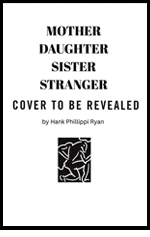
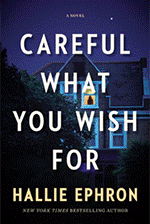
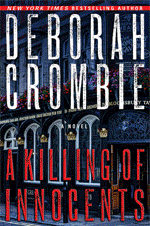
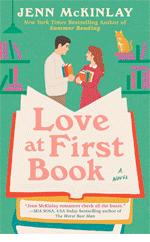
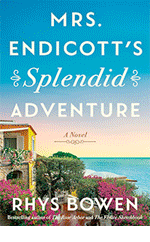

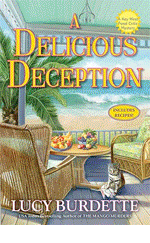
News this morning: the winners of Rhys's new paperback of Naughty in Nice were FIONA and RAMONA. Email her to arrange for having it sent: authorrhysbowen AT gmail.com
ReplyDeleteSince I have only traveled much in the last 12 years or so, fiction was my window to the world. I was an armchair traveler for 45 years. arriving in Paris for the first time was magical, and it was great fun trying to fit long-imagined places into their reality.
ReplyDeleteI'm not a stickler for accuracy in fiction; the very word implies "made up", and I don't understand why readers get so stressed out over differences from the real world.
I must admit that I have taken a tour of Great Britain through Deb's books. The second time I read through the series I searched for the places on Google maps and used street view to see the locations. I learned about Glastonbury and canals and Isle of Dogs and Southwark and Scotland and Cambridge and Henley, not to mention most of London, because of the locations of those books. The UK Chamber of Commerce should make Deborah Crombie an official member.
ReplyDeleteAs a reader, I enjoy the inclusion of real places in your books. But, if real places are used incorrectly it is very distracting. I love David Baldacci's books but when he put Brunswick on the Maine Turnpike it spoiled the flow of the book for me.
And I admit I did try to find Miller's Kill on a map. :-)
Mostly I've got real locations in my books, starting with the biggest location of all: the racetracks I write about. My point is to give non-race fans a flavor of what the real world of auto racing is, as well as to make the world seem familiar to the race fans. So the racetracks and the restaurants and hotels in the towns around them are true to life.
ReplyDeleteSo far, that's meant a bit of Google maps and Googling ice cream stores. But it's also meant trips to the races. I know you'll feel sorry for me when I tell you a future book will be set at the 24 Hours of Le Mans in France....
Tammy, I'm a sports car race official and I would love to read your books. I've worked for SCCA, CART, IndyCar, F1, IMSA, NASCAR, etc.
ReplyDeleteI like both. It's fun to imagine the settings but also fun to see the real places in historical settings.
ReplyDeleteRhys, I want to visit Patchin Place the next time I'm in NYC. :)
Cathy AH
I think Lucy hit the nail on the head when she said she didn't want to give a real place bad publicity. In PHOTO FINISH, everything about Honolulu is real with the exceptions of a couple of restaurants where something bad happens and where my protag lives. The fun part was doing the research and finding the little out-of-the-way places that the tourists never see. So, I guess that makes me one of the voters for the hybrid method, use reality, but don't insult anyone who might sue you.
ReplyDeleteI can swing either way on this topic as a reader. I feel that I've visited many spots in the world through fiction. That being said, I rarely run to the computer and check for accuracy. I would probably be annoyed if an author described Austin as a barren desert and left out our trees, but I don't care if you run Congress Ave. East/West as opposed to the accurate North/South.
ReplyDeleteBy the way, I've just caught up on Deb's series - reading 9 in a row. Am over the moon thinking about a new one in February. Love them. Love them.
Marianne,
ReplyDeleteI think you hit it - all of us like to read not just for the story but to learn, I think. Sometimes that learning is about the setting, sometime it's about the history, and sometimes it's about the world - like Tammy's racetrack or Rhys' history.
Thanks, Kay! I'm excited, too! And Marianne, don't you love Google Maps? I use it all the time to refresh my memory about places--keeping in mind that things may have changed since the footage was taken.
ReplyDeleteLucy, I'm part of the hybrid crowd. I deliberately set the Skeet Bannion books in a mythical small town with a mythical university 12 miles outside of Kansas City because I'd been a university administrator with UMKC for years and didn't want folks thinking any of the fictional bad guys were supposed to be real people.
ReplyDeleteWhenever Skeet goes into KC, though, it's all real. Real restaurants and locations such as the Plaza, Union Station, and the Westside. Although I made a few changes to the federal courthouse for plot reasons in the second book.
The book I'm currently writing is set in Kansas City. I've populated a currently mostly-vacant strip mall with a restaurant and a number of shops. I'm trying to be as accurate to the city as I can, though I won't have murders happen in any real places where it might cause problems for their business, etc.
I'm squarely in the "Both!" camp. My books are set in and around Framingham, Massachusetts, and while roughly 80% of the locales are real, I get a kick out of inventing a location and plopping it right down in an actual neighborhood. This has confused a few readers, but so far, that confusion has been genial, not annoyed.
ReplyDeleteLike Ro, I tend to squeak when I ask Donald I question and the answer I get is "Both!" I will usually say, "Don't be a wuss, make up your mind! One or the other!" But it's okay when I do it. So. Both.
ReplyDeleteI can't remember ever getting upset enough at a writer changing anything around to actually feel the need to point it out. um - "fiction" does, after all, imply "made up."
I love the way Linda Fairstein shares so much NYC architectural history in the books. I love that!
I also love hanging out in Louise Penny's fictional Three Pines.
So, yeah. Both. Tell me a good story, make the sense of place "speak" to me and I'm a happy girl.
Fiction, but that being said, I like to use chunks of real places in my fictional places.
ReplyDeleteThis morning I'm writing a scene set in my old elementary school in 1961. And I'm thinking memory is a fictionalized version of the past.
ReplyDeleteHallie, that's so interesting!
ReplyDeleteI was rading Angels and Dmons (yes, I admit it, and it had the WORST ending in the world, sorry..) while we were in Rome, and that was pretty fabulous. The settings are exactly accurate.
SO yeah, joining you in the "Both" camp. But what's interesting, too, about this, is that readers will accept either one.
"reading" I mean. Of course. Sigh. I wish I could type.
ReplyDeleteI agree with the people who like a little of each. But if a character lives in Newark and says it's a fifteen minute ride to the Jersey Shore, I don't trust anything else the author says. I don't care if an author puts three hospitals in a city that I know has only one,or has a character attending college in a town that has no institutes of higher education...I can accept that. Just call me weird,I guess!
ReplyDeleteFrom fiction, I've learned a lot about places I may never be able to visit and have even planned visits to places because I read about them. Historical fiction has inspired me to do my own research about places or events, and I even won a magazine subscription once, based on something I learned from a Michener novel.
So I guess I like "believeable" fiction!
I think Deb Romano represents a lot of readers--we have to trust our authors and if they make a big geographical blooper, it's hard to get past that.
ReplyDeleteLet's all lobby for the Deborah Crombie tour of England! Wouldn't that be fun? And then Rhys can do New York, and Hank can do Boston, and Linda, Kansas City, and I'll do Key West...Steve, is there anything to see in Framingham, before I add you to the list???
Great idea, Lucy! And yes, Framingham rocks, so let's get Steve.
ReplyDelete(Great shopping,for one thing...)
As a reader, I enjoy either. If you are making up the place, then whatever you say is fine with me. However, if you are talking about a real place, then the facts do need to be correct. I'm not so much about trying to find the towns on the map, but if your setting is a real place, then I appreciate the opportunity to learn about it as the story unfolds.
ReplyDeleteAhh, Hank. It's been a while since I've been to the Mall at Chestnut Hill or the Natick Mall. I'm game for that tour. And the UK with Jungle Red writers!
ReplyDeleteI just love visiting other places, so a blend of reality and fiction works for me. Btw, i lived for a year in Holliston, Mass. so I knew the Natick Mall really well. But it was much smaller then.
ReplyDeleteLucy, what a great idea! I already do the UK tour with Debs and Rhys and Elizabeth George. And Hank's Boston is fabulous. I love to dream I'm vacationing in Key West while I'm reading yours, and Julia's send me to the Adirondacks the same way Margaret Maron's put me back in North Carolina again. Oh, and Hallie, that Victorian in your first book was so real. I felt as if I had walked through the whole thing.
ReplyDeleteI love to go to new (and old, familiar) places in books! Part of that afore-mentioned book sluttiness, I guess. :-)
My first novel, A Class on Murder, was set in a fictional Oklahoma town. Why? Perhaps that lesson my mother once taught that if you can't say something nice, don't say anything at all stuck. Well, kind of anyway. At times I didn't have something nice to say, so I used a made up location!
ReplyDeleteI enjoy fictional places that might be real. I also like reading books set in towns and cities that exist. It's good sometimes to disguise actual locations, but they should be possible. Hank would never put the BPL on Beacon Hill, or Mass General overlooking the common. Jan would never refer to Rhode Island as down east.
ReplyDeleteMost important to me is the smooth movement of a story in time and place. I like the space to feel solid and real. I like learning about places in different times. I love fiction in a historic setting, but I don't want a history lesson.
I recently read a mystery novel that was set in late nineteenth century England. The story was very good, and it had a fascinating setting. Yet I couldn't finish it. Every chapter or two the action and story would stop dead for paragraphs, sometimes pages, of a history lesson, as if the author had inserted parts of his/her master's thesis.
Linda's uni setting outside Kansas City works great. It feels real. Linda knows uni life and administration. That is very clear and everything feels right about it.
Alexandra Sokoloff described a hallway in a fictional hospital and location. I knew immediately where it was and knew the exact spot and had felt what she described - eeriness, close to fear. I described the surrounding spot to her, and she said I had the exact place. I knew I had. There was something very good about having those things and feelings described in fiction about a fictionalized real place. If I hadn't known the spot, the very stairs and elevator, the choices one has to make in that hallway, the story would still have been chilling. More chilling was the email I received from my employer reminding me that I could never write anything potentially damaging about my colleagues at work, nor could I fictionalize them in such a way that people might guess who they were... and would I please go to my employee page and add my electronic signature to that agreement. Of course I did. I don't want to write about them anyway... but gee kids, that was spooky.
I failed to mention that I received that email the day after I commented on Alex's blog post.
ReplyDeleteThe best vacation of my life was my "Deborah Crombie tour of London" - I did find (and took many pictures of) Duncan's and Gemma's house, sampled pub fare at the Sun in Splendour, and have photos of most of the police stations mentioned in Debs' novels. And then we went to Glastonbury, climbed the Tor, drank at the George & Pilgrim, ate at the Galatea, absorbed the atmosphere of the Abbey, heard evensong at Wells Cathedral . . . all made very vividly real in Debs' A Finer End. So I'm a huge fan of real (or mostly real) locations - the novels based on real places make the geography come alive.
ReplyDelete